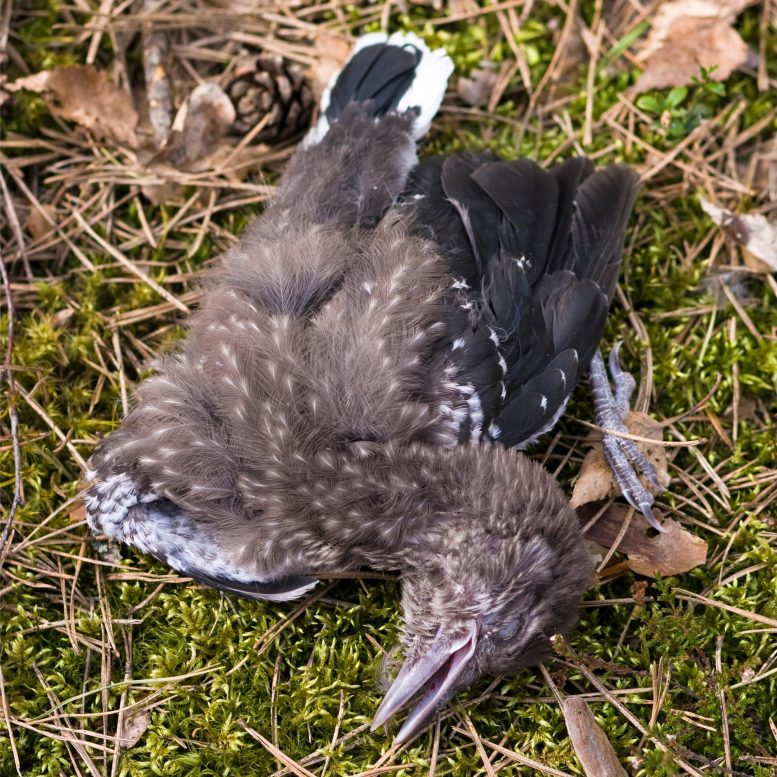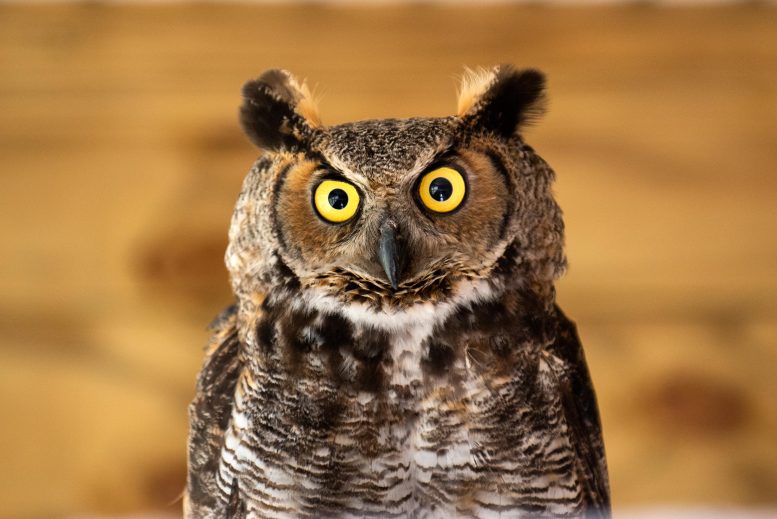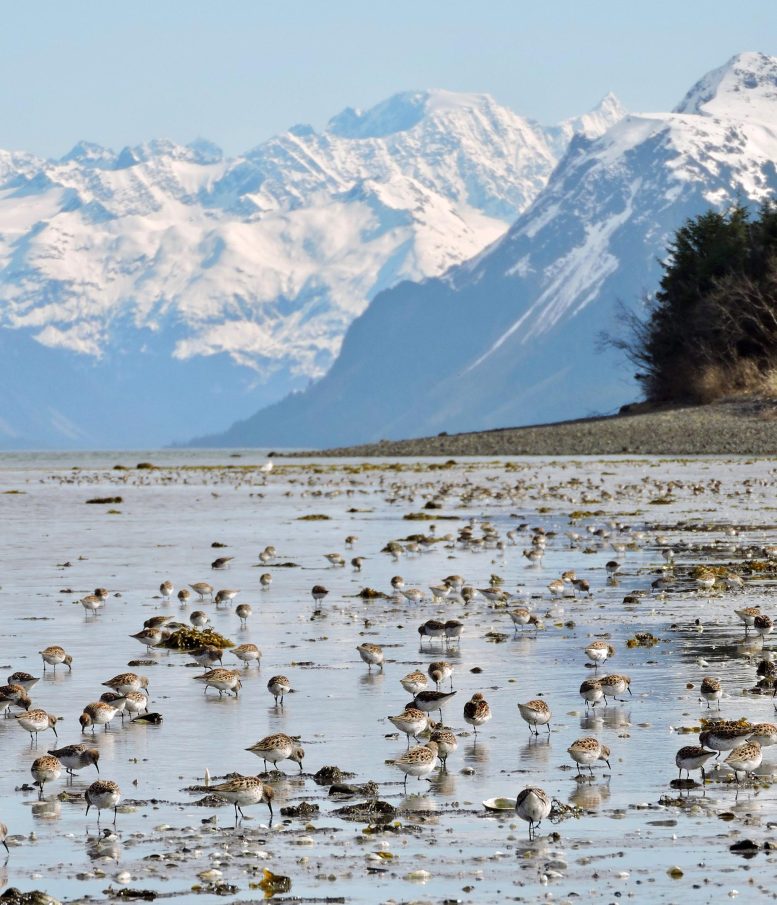
Which bird species are super spreaders of avian influenza? New research from Tufts University offers details.
A new study from researchers at Tufts University details which species are super spreaders.
When it comes to avian influenza, more commonly called bird flu, all birds are not created equal.
“The scientific community has become accustomed to speaking about influenza viruses in birds as a group, but birds are an incredibly diverse taxa of animals with different natural history, physiology, and anatomy,” says Jonathan Runstadler, professor and chair of the Department of Infectious Disease & Global Health at Cummings School of Veterinary Medicine at Tufts University.
Runstadler is one of the authors of a new research study, published today (May 19, 2022) in the journal PLOS Pathogens, which takes a data-driven look at influenza viruses circulating among different groups of birds and characterizes which types of birds are involved in spreading the virus. The timing of this paper is impeccable, as a highly pathogenic strain of bird flu has been spreading across North America.

During the current outbreak of highly pathogenic avian influenza, great horned owls are among the species that have tested positive. Pictured: a great horned owl is treated at Tufts Wildlife Clinic in 2019 (for injuries unrelated to avian influenza). Credit: Alonso Nichols/Tufts University
This lineage of bird flu originated around 1996 and was first found in a domestic goose in China. The virus mutated and persisted, and the first big wild bird outbreak happened around 2005 in a major wetland in central Asia. Subsequent changes in the virus led to a 2014 introduction to the U.S. via the Pacific Northwest, severely affecting the U.S. poultry industry and forcing the culling of about 40 million turkeys and chickens as a control measure.
Influenza A virus subtype H5N1 (A/H5N1) is a subtype of the influenza A virus that can cause illness in humans and many other animal species. A bird-adapted strain of H5N1, called HPAI A(H5N1) for highly pathogenic avian influenza virus of type A of subtype H5N1, is the highly pathogenic causative agent of H5N1 flu, commonly known as avian influenza or “bird flu.”
“It was a big blow,” says Nichola Hill, lead author of the paper and an assistant professor of biology at the University of Massachusetts Boston, who worked in Runstadler’s lab at Cummings School for nearly five years. “After it ended, we knew that we were between outbreaks and there was a high probability of an outbreak happening again. We felt we needed to look at long-term, historical data to find patterns and determine which birds are really driving the global spread. So we compared birds at a finer taxonomic scale than prior studies such as wild ducks, gulls, land birds, and geese versus domestic poultry like chickens, and we came up with some really interesting findings.”
Historically, ducks like mallards have been considered super-spreaders of avian influenza, infecting wild birds and backyard poultry alike, and Hill and Runstadler’s research found that to be broadly true. Dabbling ducks are powerful vehicles for spreading the virus and for the evolution of the virus in the wild bird reservoir. They can carry highly pathogenic strains and be completely asymptomatic, plus they swim and fly so they can move the virus in a variety of ways, including into local water bodies.
But there are other birds that play a more substantial role in transmitting the virus. “When we looked at which birds were responsible for spillover into poultry, signs pointed to wild geese, which are really good at amplifying the virus,” Hill says. “We need to understand why in terms of their host pathology, immunity, behavior, and ecology.”

A feeding frenzy of western sandpipers (Calidris mauri) during the mass migration via Cordova, Alaska – a key study site in the paper. Credit: Wendy Puryear
One ecological factor that may play a role is that geese are land grazers and thrive in cities and agricultural settings. Many goose species in North America and Europe are considered pests. “They really are the perfect spillover host because they can make use of human-altered habitat,” Hill adds.
Furthermore, understanding which birds drive long-distance spread may influence how or when the virus enters a new geographic region. For example, the 2014 outbreak entered the United States via the Pacific, likely carried by ducks, but the current outbreak moved in via the Atlantic, and ducks may not have been involved to the same extent.
“The first wild bird detections in 2021 were great black-backed gulls,” says Hill. “Gulls are strong, long-distance, pelagic fliers that take advantage of tailwinds to travel over ocean and move the virus very quickly.”
An outbreak of bird flu of this size and scale has never been seen before in North America. About 40 species of birds have become infected in the current North American outbreak, including songbirds like crows and sparrows, as well as raptors like owls and hawks. This outbreak has a bigger geographic range and is impacting a broader diversity of species compared to the 2014 outbreak in North America.
“Knowing that gulls, geese and ducks may be moving this virus in different ways is a big contribution to understanding or eventually modeling with more accuracy how we expect a virus like this to spread,” says Runstadler. “Ultimately, we could put this data into a model that allows us to predict if there’s a virus emerging, when that virus might enter North America, and what bird populations we might target for surveillance to detect it.”
Clinic Collaboration
Runstadler has been researching avian influenza since 2005, when his lab was located at the University of Alaska Fairbanks and the H5N1 strain of the virus was emerging in East Asia. The scientists in his lab study the ecology of influenza viruses in wild animal hosts, including birds, which are major reservoirs for influenza. Runstadler says most flu viruses are thought to have originated in birds and spread to other hosts.
Runstadler’s lab regularly collaborates with Tufts Wildlife Clinic and director Maureen Murray, clinical associate professor at Cummings School, to gather samples from a variety of birds coming through the clinic, not just the ones showing clinical signs of avian influenza. The goal is twofold: to understand the epidemiology of the virus and manage avian influenza cases safely in the clinic.
“When we admit new birds to the clinic, we sample them to see if they’re carrying the virus and isolate them until we get a negative test to make sure we’re not exposing our other patients to the virus,” says Murray.
The samples are screened at Runstadler’s lab to determine whether a bird is carrying an influenza virus, and if so, whether it’s the H5 strain responsible for outbreaks. Runstadler notes this exercise to gather data now is critical for comparison with data in the future. If a bird tests positive, the sample is sent to the USDA’s National Veterinary Services Laboratory for additional testing and sequencing as a final confirmation.
“We’ve seen some positive birds come through the clinic, including great horned owls, snowy owls, a bald eagle, and a peregrine falcon,” Murray says, “but fortunately, not a lot of cases.”
Risk to Humans
Though avian influenza is zoonotic, the risk to people is very low. Runstadler says there is practically zero threat to the average person going about their daily lives. It is of slightly more risk to people who handle birds regularly, such as wildlife professionals, poultry workers, or backyard chicken owners.
Recently, a man in Colorado was diagnosed with avian influenza, marking the first human case in North America during this outbreak. Media reports indicated he was involved with culling poultry and infected by a sick bird. According to the Centers for Disease Control and Prevention (CDC), he had mild symptoms, was isolated, and recovered. The fact that his symptoms were mild is paradoxically concerning because, Hill notes, it makes the virus harder to detect and track, as infected individuals may ignore mild symptoms and not seek treatment—much like COVID-19.
Murray and the Wildlife Clinic staff wear personal protective equipment when handling birds, which includes gloves, isolation gowns, goggles, and masks. And they have a list of recommendations for the public regarding avian influenza protection.
“If you see a bird that seems to be sick—it can’t stand up, looks off balance, or isn’t aware of its surroundings—we recommend first calling your local animal control officer or a wildlife rehabilitator for assistance,” Murray says. “But if you must handle it yourself, we recommend wearing at minimum a three-ply face mask, or a more protective mask if available, such as an N95. Gloves are also a good idea, but if they’re not available, wash your hands really, really well afterward.”
She adds that people who have birds at home should change their clothes and shoes after touching the sick bird and before going near their own birds.
Hill is not only concerned about human spillover, but with mammalian spillover in general. She points to animals such as dogs, foxes or coyotes that may predate on birds, especially vulnerable ones showing neurological symptoms or in respiratory distress. It’s unclear at this point what the result of those interactions could be, though infections in red foxes have already been reported in the U.S., Canada, and the Netherlands.
Will This Outbreak End?
“The short answer is nobody knows,” Runstadler says, “because we don’t have a sophisticated enough understanding though we hope someday we will. It’s a very complex system.”
The 2014 bird flu incursion gradually fizzled out, but that’s not likely to happen this time, he says, because the 2022 incursion is quite different from the last outbreak. The viruses identified in North America in 2014 contained pieces of the highly pathogenic H5 viruses, but not the whole virus, like this outbreak. Also, this incursion seemingly has spread faster than the last one. In addition, Hill says her research has shown a pattern of the scale and magnitude of bird flu outbreaks increasing over time.
“There’s reason to expect this virus is here to stay, and it’s not going to disappear,” says Runstadler.
Reference: “Ecological divergence of wild birds drives avian influenza spillover and global spread” by Nichola J. Hill, Mary Anne Bishop, Nídia S. Trovão, Katherine M. Ineson, Anne L. Schaefer, Wendy B. Puryear, Katherine Zhou, Alexa D. Foss, Daniel E. Clark, Kenneth G. MacKenzie, Jonathon D. Gass Jr., Laura K. Borkenhagen, Jeffrey S. Hall and Jonathan A. Runstadler, 19 May 2022, PLOS Pathogens.
DOI: 10.1371/journal.ppat.1010062